You are currently browsing the category archive for the ‘urbanism’ category.
I was talking with some friends this morning (and by “morning” I mean 2 PM) about cul-de-sacs and how, for planners, they are a really inefficient and disconnected urban form. I thought I would reproduce my argument here, since it’s a pretty simple exercise in Google Mappery.
Case in Point: Going to Target in western Columbus, Ohio
Figure 1: My parents’ neighborhood in relation to a nearby recent development – the aerial photo is out of date, but in that empty land east of the interstate, there is actually a medical office complex and, on the other side of Trueman, a Home Depot and Target (marked in map).
There is a cul-de-sac separating the neighborhood from the road. Trueman was built around 2006 or so, the houses are only a few years older, and the construction of that road had been on the books for years. In addition, the houses around that cul-de-sac have all put up sturdy metal fences to prevent anyone from cutting through their small yards. There is luckily a nature trail just south of the neighborhood with an outlet onto Trueman, with a sidewalk on that side for relatively pedestrian friendly access (along a 35-mph, four-lane road).
If you wanted to walk from my parents’ house to Target, with a total distance of about 0.7 miles, you would take the following route (Figure 2):
Now, let’s say you wanted to drive to Target instead. Even if you combine this with other trips down the line, it will add 2 miles to your trip (note: this is Google’s suggested route):
There is a slightly shorter route if you instead take Hilliard Cemetery Road, but because of an odd U-turn and boulevard situation, you pretty much have to go further out of your way to get home (Figure 4):
Now, not all cul-de-sacs are extremely inefficient like this one was, but it pretty much illustrates why they are a bad idea.
QED.
The final installment of my NYC photos. It was especially hard to choose for this set, as it includes shots of Williamsburg/Brooklyn, the High Line, AND Central Park. I’ve chosen a mix of detail shots and, in the case of Central Park, some interesting pictures of actual people (rare for me, I know!) I encountered.
Back to writing soon. As well as a brief discussion of how to do easy and successful LEGO photography.
On Saturday (last month) I spent a lot of time in Midtown Manhattan, seeing the big sites, and some smaller ones as well. More photos from the trip.
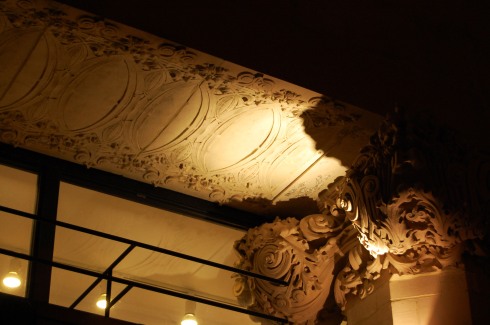
Plaster Detail, Manhattan

Graffiti, Manhattan
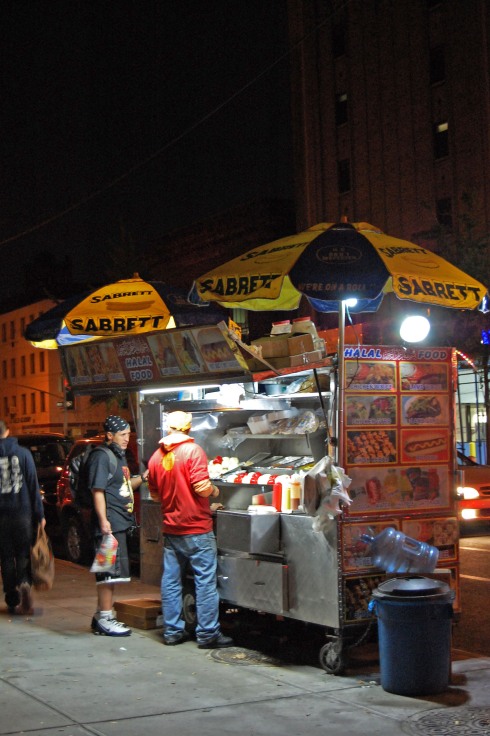
Hot Dog Vendor
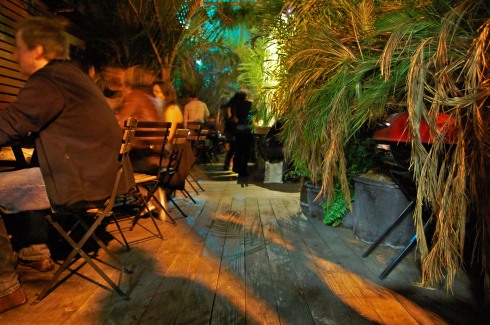
Palm Room, Some Bar

Madison Avenue and 42nd Street

Grand Central Station

Grand Central Station
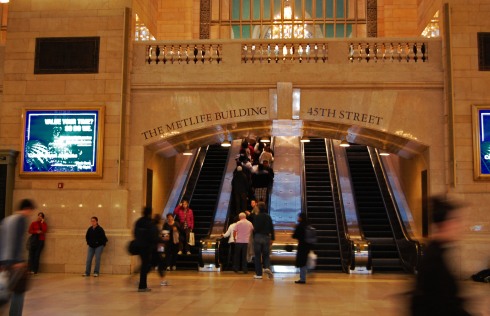
Grand Central Station

Buildings in Midtown
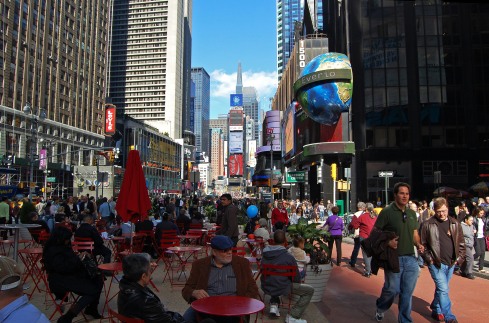
Times Square

Times Square
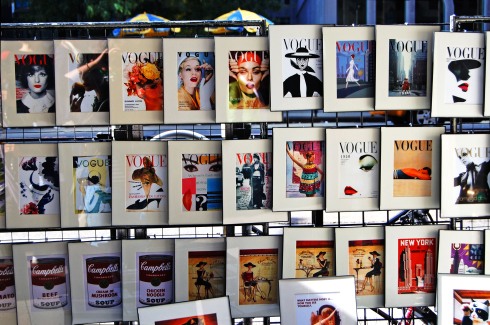
Vogue Covers

Chrysler Building, Lobby

Chrysler Building
Omigosh.
William Hollingsworth (“Holly”) Whyte.
This will require further investigation, but I think I found one of my new favorite people. A few words on the man, from a collection of his work, The Essential William H. Whyte (Fordham UP, 2000):
“William H. Whyte, known to friends and family as Holly, was a prophet of common sense. He did not approach the city with a preconceived vision; he came to it as an observer, and he based his philosophy of open space, his prescription for the civilized way of making cities, on what he saw. He was in every way an urban anthropologist, and he had the objectivity of a great scientist, prepared to gather the evidence and be guided by it. He cared more than anything about how people used the spaces they were given, and he told us more than we had ever known about that. Where architects and planners had been designing by intuition, Holly Whyte gave them facts.” (Foreword by Paul Goldberger)
“Whyte was an astute observer who reported how people actually behaved (rather than how we assume they behave). A charitable critic with a real moral bent, Whyte was cheerful by nature, ever the optimist; even if his observations about postwar American life were laced with warnings, some of them quite ominous, Whyte was always thinking positively, and he was clearly a patriot. His affable personality and the agreeableness of his prose permitted him to go further in his social criticism than was typical in the popular media of the day, and people listened.” (Introduction by Albert LaFarge)
I just picked up this book and will have to reflect more on his work at a later time – partly because I should actually be reflecting on it in my Physical Planning project. But just browsing through “The Class of ’49” from The Organization Man, I realized that he describes an institutionalization of young male America as a result of military service in World War II – a desire for structure, hierarchical management, and stability in a large organization (e.g. AT&T) rather than the messy riskiness, and sometimes inefficiency, of small businesses. This is interesting for so many reasons:
- Profound influence of the experience of war, particularly of soldiers, on the structure of society
- Changing social organizations and ideals and desires and goals
- The (possible) fundamental shift in thought post WW2 in American culture
- The desire for stability, commoditization, sameness, as a response to war
- The rise of what we are currently dealing with, and its potential decline and/or change (that is, big corporations; widespread suburban developments; a culture of sameness; hierarchical vs. collaborative structures; dependence on certain resources; what it means to be a worker and contribute to society)
- The physical/spatial implications of these values, and how we interact with where we live
Something to throw out there: the Internet (with accompanying ideas of digital information, non-hierarchical or spatially-based networks, networks in general, new communication patterns, more fluid identities, information overload, etc etc etc) is on par with World War 2 in terms of its level of influence on our culture and society – how we value and organize our world and each other.
Whereas postwar American culture was built on the desire to rebuild a better society out of mass cultural hardship and trauma,
Contemporary culture is being built by our attempts to deal with a torrent of information we’ve created … but major ideological/value conflicts also need to fit in there somewhere … hmm.
Holy crap.
I need to think about this a lot more.
I’m so intellectually flipping out right now.
Well, only two weeks late with putting up some photos from my New York trip. I took way more than was good for me, so I decided to focus on some of the details in this set.
These are all from Day 1: Brooklyn Bridge, Financial District, Broadway, Soho, and NYU/Greenwich Village.

Brooklyn Bridge Cable
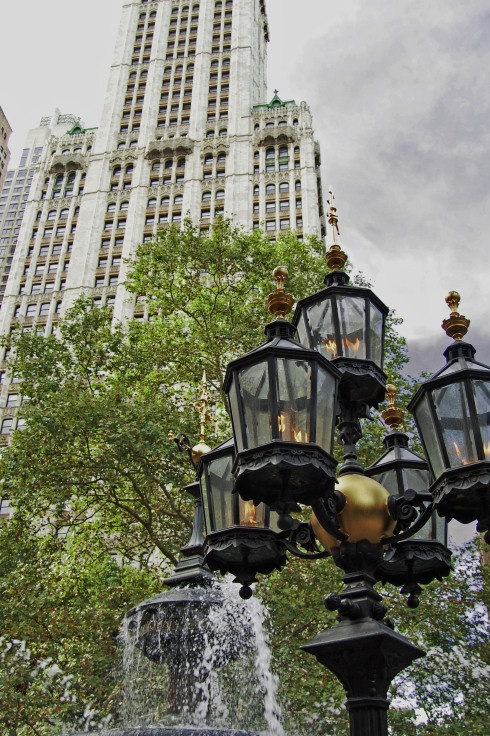
City Hall Park
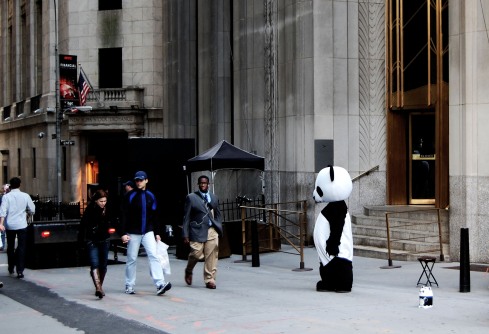
Panda on Wall St
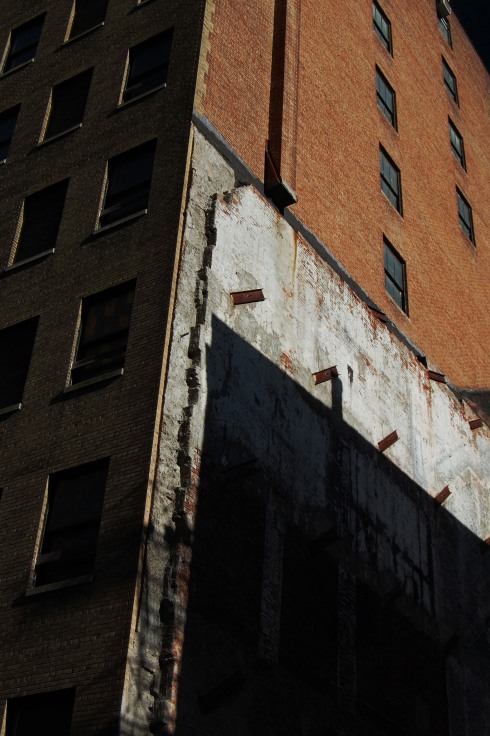
Brick Building
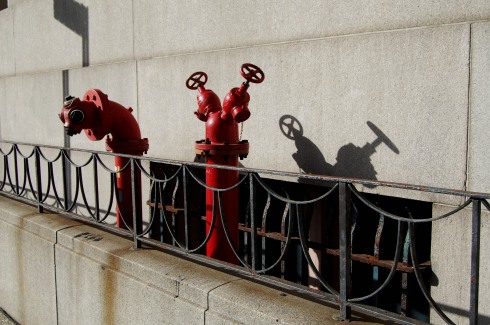
Hydrants, Financial District

Broadway and Pine
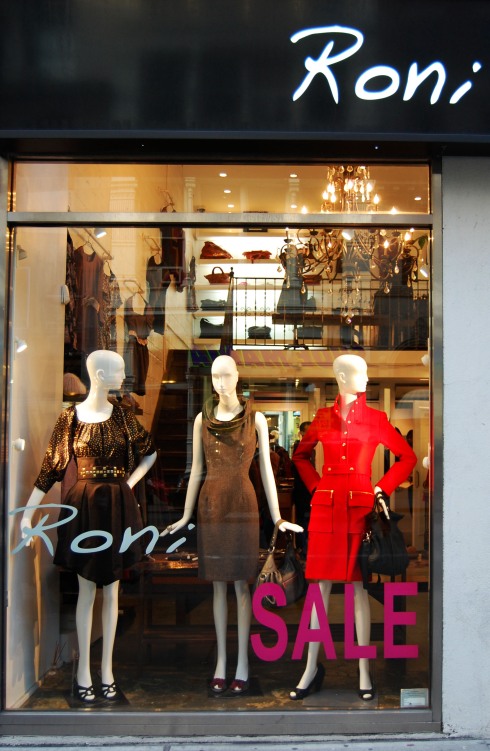
Store Window
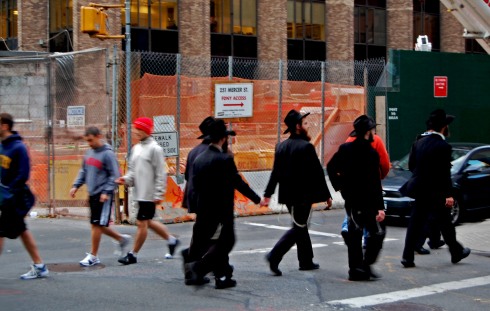
Going to Temple
Just returned from my first official professional planning conference, the APA Upstate New York Regional Conference! I probably wasn’t as “professional” as I should have been, but it was a good time and the department comped most of it.
Most notable here: I didn’t realize how much I missed delapidated city streets until our drives and walks through the area immediately around downtown. I’ve included a couple photos (pre-processing) of my usual super abstract brick-wall-and-a-weed style.
Also, out of idle curiosity I checked out this and the other blogs’ reading stats lately… Stan&Ergo is doing better than I thought! I should post some new ones soon. Also, I found it amusing that almost exclusively, the key words listed to find the other blog were variations of “epic fail.” Good times.
I’ll post the rest on Facebook, until I finally get around to a photoblog format.

Under Construction, Albany

Brick Wall, Albany
A lot on my mind recently, and I’ve been delinquent in putting these thoughts down in digital form.
For the time being, here are some photos from today’s walk to downtown (I would say “to and from” but the rain made me wuss out and take the bus home). I headed from Wicker Park to Grand Avenue, saw a movie, and spent a bit of time in Millennium Park until I got somewhat rained out.

I walked underneath Michigan Avenue for the first time (or at least, first time in that direction) – here’s the stairs to and from the lower level.

The “American Gothic” statues at the NBC Plaza, against a backdrop of the Tribune building. Still working on how to hold the camera vertically.
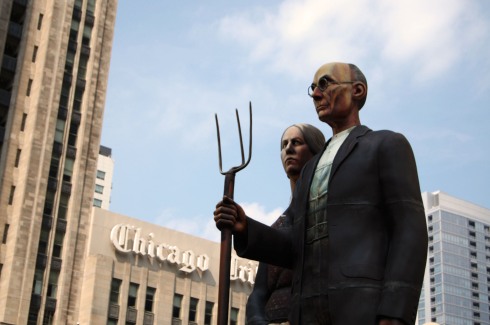
The rain at Millennium Park wasn’t heavy, just enough to make the park-goers huddle together under umbrellas.

My favorite photo – I love the floral umbrella. This might have been the usual number of people at the Bean, but they seemed to be seeking shelter underneath it.

Five sparrows sitting by the Crown Fountain in Millennium Park. They flew away about five seconds later.

The rainy bus ride home (and messing around with the focus function)
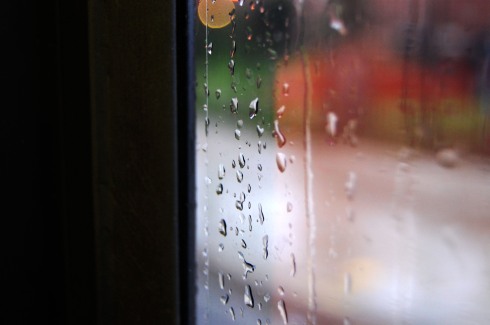
Three weeks, more or less, until I leave Chicago. More thoughts on this to come.
I came across this article via Planetizen and it reminded me of another one about which I was very excited earlier this month. The subject of collaboration in design, particularly urban design in this article, but the principle can extend to other fields.
This might sound Future-Shock-meets-World-Is-Flat (oh the name dropping) but it seems like a recent major shift in our working culture is toward more mobility – in terms of where work is done, outside the office and on the phone or at home or in a remote location, as well as the number of jobs (or even careers) an individual holds over the course of a lifetime. The next logical step, then, is to allow this mobility to influence *where* we actually get work done, and with whom. If one isn’t tied to an office desk, and one can work at home or on a bus or in a coffee shop, is this necessarily better or more productive if one is still alone? Why not congregate and collaborate in a place of everyone’s choosing in order to be productive, feed off of each others’ creative energy, address and solve problems face-to-face rather than by indirect communication – was this not the point of having office space in the first place?
These articles describe two different collaborative environments and how they promote a positive culture of design. As I currently work in an environment that is thoroughly stuck in the mid-20th-century in terms of workflows and productivity and their approach to the creative process, it’s really exciting to think that there are alternative work environments out there, that they produce good results, and that *someone* else out there recognizes the importance of people working together, enjoying where they are and who they’re with, and making work an effort rather than a toil!
Fast Company – “PieLab in Rural Alabama” – recent article about a group which seeks to promote community and good design, with a side of pie.
Urban Omnibus – “Work and the Open Source City” – this article really got me excited about collaborative workspaces. Less excited about the whole “cloud” cliche.
While I’ve already violated my rule to not spend any money today (not to excess, at least!), I successfully spent the afternoon transit-free. After a couple errands, I headed down Milwaukee Ave. to the Loop (according to Google Maps, at least 2.2 miles from Wicker Park). On my to-do list were the Rookery Building, the Monadnock Building, picking up a couple books from the library, and another jaunt up the Nichols Bridge at the Art Institute.
My camera was gracious enough to keep the battery alive for the whole afternoon, and I came across some interesting stuff. After a lovely mini-tour of Oak Park earlier this week, I’m starting to think about another one of downtown… judiciously avoiding most of the touristy stuff in favor of more interesting sites.

Interesting shadows of an old fire escape
I finally saw the Rookery Building – definitely worth a visit!
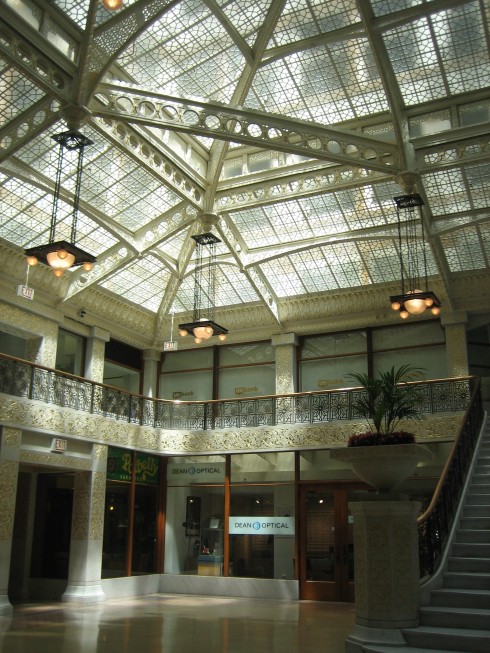
Lobby of the Rookery Building
The Nichols Bridge, the spatial liaison between Millennium Park and the AI’s Modern Wing, might be one of my new favorite things. I really wish they would leave it open at night, I’m sure it’s a beautiful view of the city.
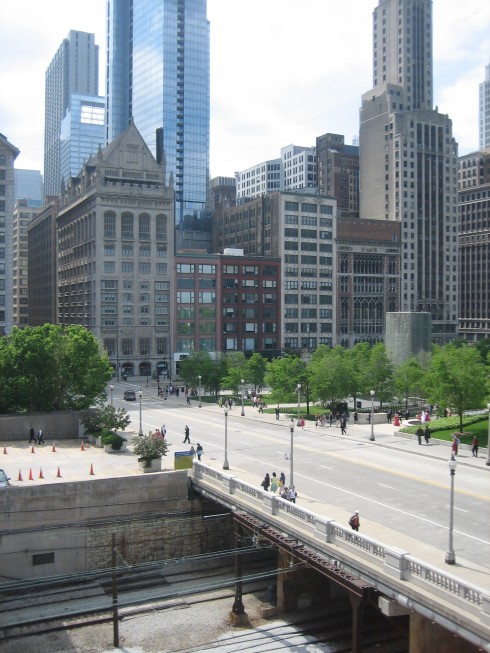
A visual reminder that Chicago was built on the railroads...
… And a bonus: I found an old rail bridge. Very cool.

Looking up at the old rail bridge
All in all, a lovely afternoon. I’ll miss this city.

































